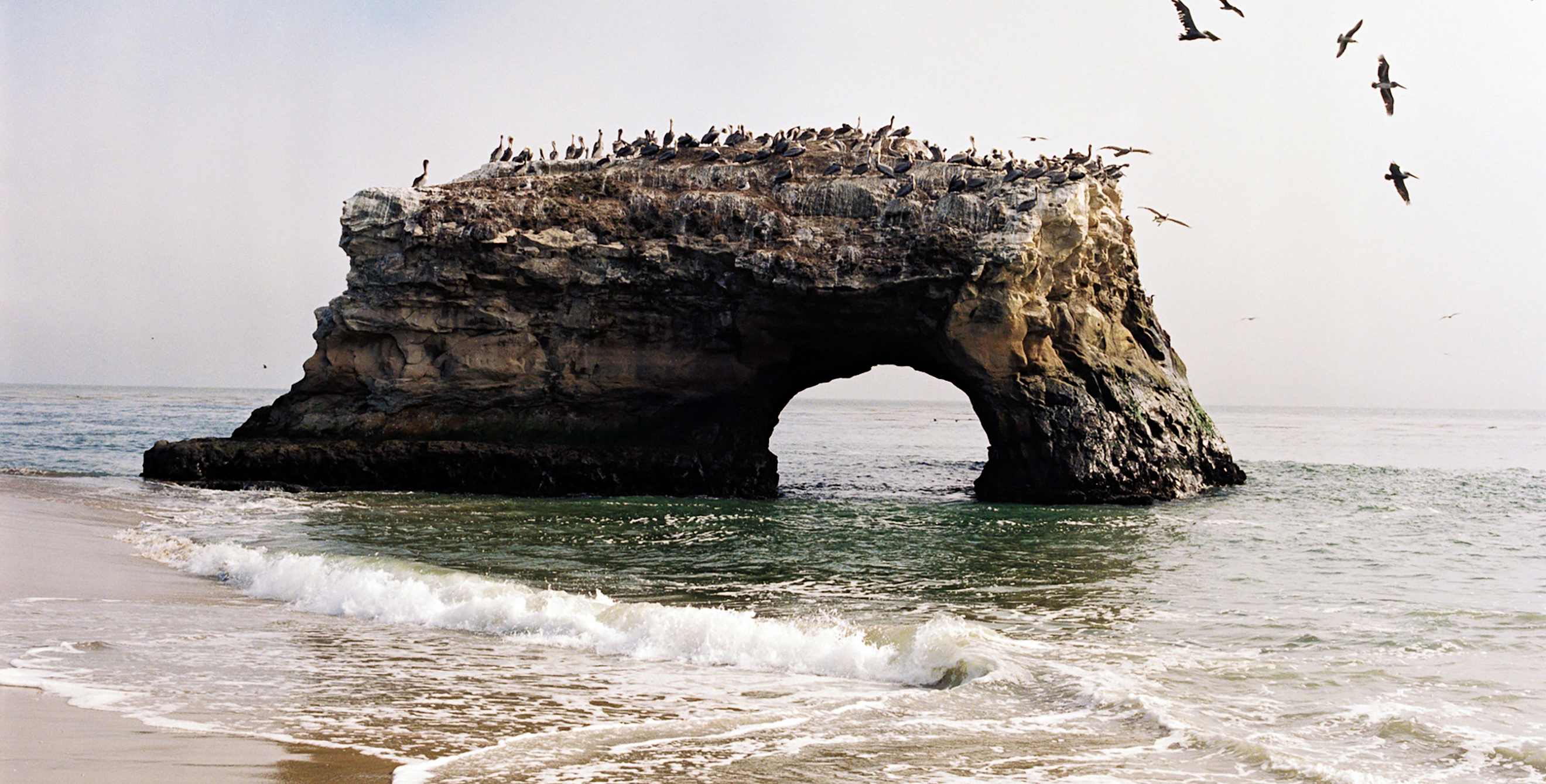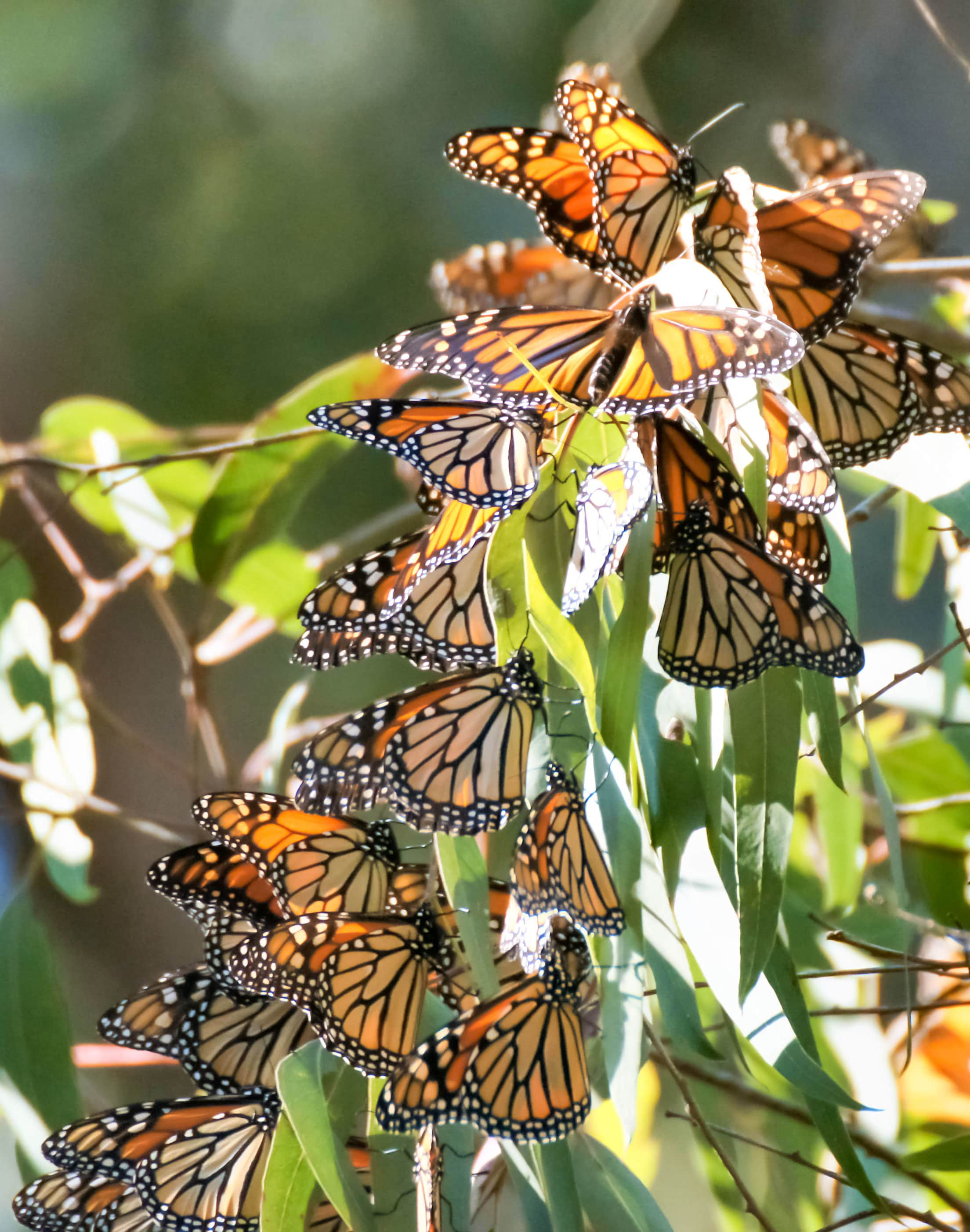
Explore in and Around California’s Natural Bridges State Beach
Each fall, this coastal park adds overwintering Western Monarch butterflies to its bounty of tidepools, marshes, and stone.

Named for the mammoth mudstone arch that rises dramatically from the surf, Natural Bridges State Beach is a popular photo backdrop—and so much more. Amid the park’s 65 acres of rugged Santa Cruz coastline, you can relax on a sandy beach, explore teeming tide pools, and, in the fall, marvel at monarch butterflies.
Reign of the Western Monarchs
The orange and black beauties first flutter into the surrounding neighborhoods in September, according to Martha Nitzberg, lead interpreter at Natural Bridges. As the air cools and wind picks up, the wispy-winged wayfarers head to the park’s protective sanctuary of eucalyptus trees. By mid-October, thousands are huddled in clusters and hanging from branches, like living ornaments, for their overwinter rest. How many arrive each year depends on several factors, including habitat loss, pesticides, and seasonal storms.
“We had around 10,000, the most in the state, a few years ago, and have had as little as around 2,200,” says Nitzberg.
Drop by the visitor center to pick up a park map, view educational displays, and check the current viewing conditions. Then, take the nearby wooden boardwalk, which slopes gently into a small eucalyptus grove. Shafts of sunlight slip through the silvery canopy above, occasionally illuminating the stained-glass-like wings of the monarchs. On a warm day, some quiver through the air on short flights. But when temperatures drop below 55 degrees, they remain clustered together high up in the trees. These can be challenging to spot (plus, their wings are less vibrant when closed), so park staff will sometimes set up a spotting scope. Come February, the ephemeral monarchs will journey north.

Critter Country
There are more incredible creatures to be discovered at Natural Bridges, especially in its mosaic of tide pools. Plan your visit when the tide is at 2 feet or lower for optimal viewing of orange sea stars, barnacles, scuttling crabs, and anemones clinging to slippery and mossy rocks (step carefully and in sturdy shoes). Look up and you might also glimpse frolicking sea otters, tide-chasing sanderlings, and even whales at certain times of the year.
“It might surprise visitors to know that we are also a great place for bird-watching since there are 13 different habitats around the park,” says Nitzberg, who’s seen cormorants, Townsend’s Warblers, shorebirds, and even a turkey.
More to Do
Wander around the connected Moore Creek Preserve, with its saltwater and freshwater marshes, or fly a kite in the afternoon breeze. The park’s day-use picnic area is situated in a eucalyptus and pine grove and offers barbecue grills and restrooms. And, of course, don’t miss a sunset photo in front of the towering natural bridge, the only one remaining of the original three and often topped with birds.
Bites and Sights
For a pre-park pick-me-up just a mile away, Companion Bakeshop serves coffee, croissants, cinnamon rolls, and other doughy delights. Don’t miss a chance to take a spin on the wooden Giant Dipper roller coaster at the Santa Cruz Beach Boardwalk, California's oldest amusement park, just 3 miles away. Or, drop by the tiny but mighty cool Santa Cruz Surfing Museum, where 100 years of local surfing history is chronicled in photos, surfboards, and other artifacts, a 10-minute drive from the park’s entrance, or a 2-mile walk or bike ride on the multi-use trail on West Cliff Drive.
Best Time to Go
Western monarchs can journey more than 1,000 miles to reach the California coast. To celebrate their arrival, Natural Bridges hosts a free, family-friendly Welcome Back Monarchs Day festival every October (Oct. 5, 2025), with skits, food, live music, games, crafts, and information tables where nature enthusiasts can learn about butterflies and other park creatures. Each February (Feb. 14, 2026), a similar event bids the orange-and-black jewels adieu for the spring and summer.
Natural Bridges is open daily from 8 a.m. to sunset. A $10 day-use fee covers parking.